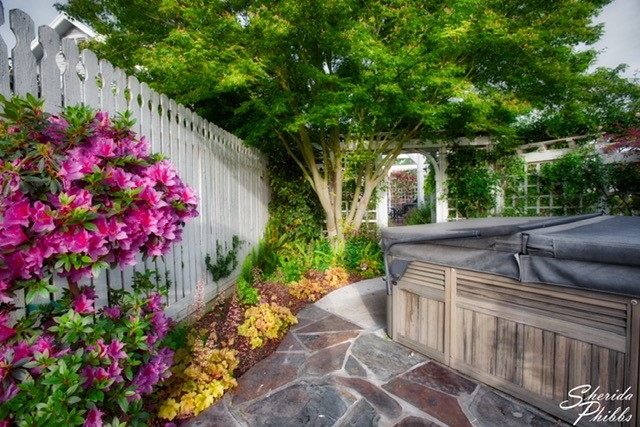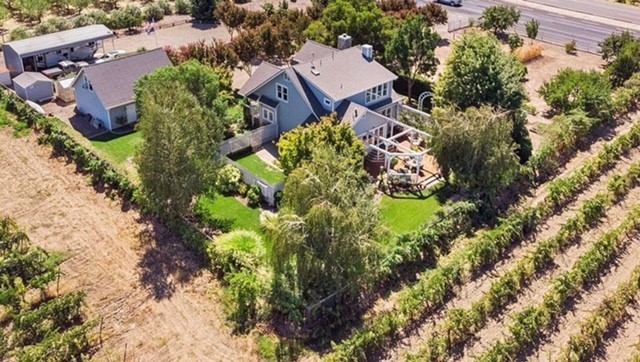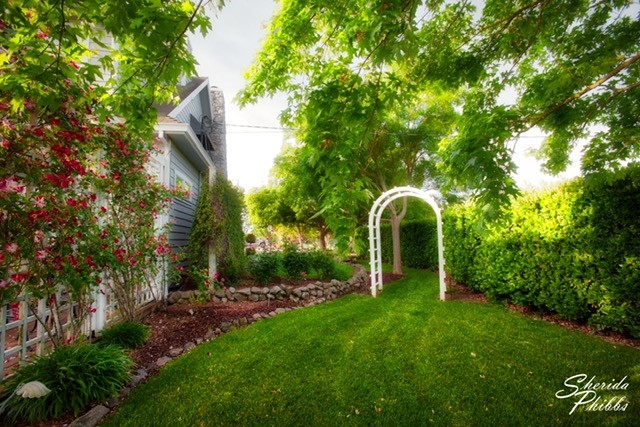As spring unfurls its vibrant tapestry, local nurseries beckon with a kaleidoscope of colors, inspiring garden enthusiasts to bring life to their landscapes. However, successful gardening is not just about choosing aesthetically pleasing plants; it requires a deep understanding of your planting zone and the nuanced world of microclimates. This comprehensive guide aims to delve into the intricacies of these two critical elements, providing insights into plant selection, optimal growing conditions, and landscaping success.
THE MEDITERRANEAN CLIMATE: A UNIQUE ECOLOGICAL TAPESTRY

Geographical Distribution: 1. Mediterranean Basin: This is the eponymous region, covering countries such as Spain, Italy, Greece, and Turkey. Coastal areas along the Mediterranean Sea experience the classic Mediterranean climate. 2. California, USA: The state of California is home to vast stretches of land with a Mediterranean climate, especially in regions like the Central Valley, Central Coast, and parts of Southern California. 3. Chile: Central Chile, including cities like Santiago, features a Mediterranean climate due to its proximity to the Pacific Ocean. 4. Southwestern Australia: Coastal areas in the southwestern part of Australia, including Perth, exhibit Mediterranean climate characteristics. 5. Cape Town, South Africa: The Cape Town region at the southern tip of Africa experiences a Mediterranean climate, contributing to the unique biodiversity of the Cape Floral Kingdom
Distinctive Seasonal Patterns: Winters in Mediterranean climates are typically cool and wet, featuring infrequent freezing temperatures. This season provides a crucial source of moisture for the ecosystem. In contrast, the long, dry periods of summer and fall are marked by warm to hot temperatures and limited rainfall. This prolonged dry spell contributes to the unique challenges and adaptations of the local flora.
Native Flora Adaptations: Native California plants, including those in San Joaquin County, have evolved over time to thrive in this specific climate. These adaptations enable them to endure the seasonal fluctuations and water availability inherent to the Mediterranean climate. The flora has developed mechanisms to conserve water during the arid summers, contributing to the region's ecological resilience. Natives from other Mediterranean climate groups also adapt well to our landscapes and gardens. These websites are excellent resources:
California Native Plant Society: Calscape website, a database of 7,936 plants native to California—https://calscape.org/
Mediterranean Plants Database: Euro Med PlantBase website—https://europlusmed.org/cdm_dataportal/search
DISCOVERING YOUR PLANTING ZONE

Some benefits of using the Sunset Western Garden Book for your plant choices: it offers a wide range of plant recommendations, including trees, shrubs, flowers, and vegetables, with details on each plant's characteristics, and cultural care requirements; and it offers ideas and inspiration for creating beautiful and functional landscapes, including plant choices for various microclimates within your garden.
The Sunset Climate Zones include the following regions: California, Texas, Oklahoma, Washington, Oregon, Idaho, New Mexico, Arizona, Nevada, Wyoming, Utah, and Colorado.
Considering the San Joaquin County region, the Sunset zone is 14, the United States Department of Agriculture (USDA) cold hardiness falls under zone 9B, and the American Horticultural Society (AHS) heat zone is 8. Knowing these specific zones provides a solid foundation for tailored plant selection and care that aligns with your local climate.
The USDA zones divide North America into zones based strictly on the average annual extreme minimum winter lows. Nurseries use USDA hardiness zones on plant tags to indicate a minimum low temperature that a plant can survive. The USDA Zones—updated in November 2023—indicate an increase of 2.5 degrees Fahrenheit in temperatures across the United States.
To check your Sunset Climate Zone, go to: https://sunsetplantcollection.com/climate-zones/
To check your USDA Cold Hardiness Zone, go to https://planthardiness.ars.usda.gov/
To check your AHS Heat Zone, go to https://ahsgardening.org/about-us/news-press/cool_timeline/heat-zone-map-developed/
Understanding your planting zone is crucial, not only for choosing the right plants but also for determining the best time to plant vegetable crops and gauging the suitability of certain fruit trees and berries for your area.
EXPLORING MICROCLIMATES: CLIMATE VARIATIONS WITHIN YOUR LANDSCAPE
DEFINING MICROCLIMATES
Microclimates are small-scale, localized climates that differ from the surrounding larger climate. Various factors contribute to the development of microclimates, creating a complex tapestry of temperature, humidity, and other environmental conditions within a confined area. These factors can be influenced by both natural elements and human activities.
CAUSES OF MICROCLIMATES
Topography: The lay of the land, whether flat, sloping, or hilly, significantly impacts temperature and precipitation distribution. Valleys may trap cold air, creating cooler microclimates, while hilltops may experience more wind exposure and temperature fluctuations.
Proximity to Water Bodies: Bodies of water, such as lakes, rivers, or oceans, play a vital role in shaping microclimates. Water, with its high heat capacity, leads to milder temperature variations in areas nearby.
Urban Heat Islands: Human activities in urban areas can lead to the formation of microclimates known as urban heat islands. The abundance of concrete and asphalt surfaces in cities absorbs and retains heat, causing localized temperature increases.
Vegetation: The type and density of vegetation in a specific area can influence its microclimate. Trees provide shade and transpire water, cooling the surrounding air. Dense plantings of trees may create cooler and more humid microclimates, while open grasslands may allow for greater temperature fluctuations.
CHARACTERISTICS OF MICROCLIMATES
Temperature Variations: Microclimates often exhibit distinct temperature variations compared to the broader regional climate. Some areas may be warmer due to exposure to sunlight and reduced wind, while others may be cooler, influenced by factors like shade or elevation.
Humidity Levels: Humidity can vary significantly within microclimates. Areas with dense vegetation or proximity to water bodies may have higher humidity, while open spaces or regions with intense sunlight may experience lower humidity levels.
Wind Patterns: The presence of obstacles, such as buildings or hills, can disrupt wind patterns and create unique microclimates. The windward sides of structures may experience higher wind speeds, while leeward sides may be sheltered, affecting temperature and moisture levels.
Precipitation Patterns: Microclimates can also influence precipitation distribution. Rain shadows, created when mountains block the passage of moist air, result in drier microclimates on the leeward side. Conversely, coastal areas may experience increased precipitation due to the proximity of water bodies.
PRACTICAL IMPLICATIONS FOR LANDSCAPING
The UCCE Marin Master Gardeners have crafted a highly valuable downloadable spreadsheet, conveniently printable for your use. This tool serves as a practical aid in systematically assessing your landscape, enabling you to pinpoint and understand the specific microclimates within your garden. Entitled the “Garden Site Microclimate Evaluation Form,” this resource empowers you to make informed observations and strategic decisions for optimizing your gardening experience. https://ucanr.edu/sites/MarinMG/files/47782.pdf
Plant Selection: Understanding the microclimates within your landscape is crucial for selecting suitable plants. Different species thrive in specific sun/shade requirements, and have their own preferences for temperature and humidity ranges. Choosing plants adapted to the microclimate of a particular area ensures better growth and longevity.
Water Management: Microclimates can have varying water requirements. While some areas might be naturally moist, others might be prone to dryness. Efficient water management strategies, such as drip irrigation or rainwater harvesting, can be tailored to the specific needs of different microclimates.
Microclimate Design: Knowledge of microclimates allows for intentional design choices. Planting trees strategically can provide shade and cool specific areas, creating comfortable outdoor spaces. Additionally, structures like pergolas or windbreaks can be strategically placed to modify wind patterns and temperature.
Microclimate Awareness for Urban Planning: In urban planning, understanding microclimates is essential for creating sustainable and comfortable living spaces. Incorporating green spaces, optimizing building orientations, and using reflective materials can mitigate the impact of urban heat islands and enhance overall livability.
HARNESSING MICROCLIMATES
Beyond the broader classifications of planting zones, most gardens and landscapes harbor microclimates—localized pockets influenced by diverse environmental factors. Recognizing and leveraging these microclimates can significantly enhance gardening success. Here are some examples:
Shade Trees and Overhead Structures: These areas provide ideal planting spots for shade-loving plants. On frosty evenings, these spots tend to be a few degrees warmer than open ground, offering protection to delicate plants.
South and West Walls: Masonry and stucco south- and west-facing walls absorb solar energy during the day and release it at night. This warmth is particularly beneficial for heat-loving vegetables, helping them thrive even on cooler summer days. However, on hot summer days, the heat generated during the hottest part of the day may be too hot for some plants.
North Walls: These areas receive minimal direct sunlight, making them perfect for woodland plants like ferns that thrive in shaded conditions.
East Walls: These surfaces generally receive up to half a day of sun, less intense than west-facing walls.
Eaves: Eaves can provide frost protection for delicate flowers, preserving their beauty during chilly nights.
Sloping Grounds: These areas tend to have warmer airflow than hilltops or valleys below, making them ideal for growing citrus trees and other heat-sensitive plants.
Dry Banks: Drought-tolerant plants are well-suited for planting in dry bank areas, as they can thrive in low-water conditions.
Cold Air Pockets: Low-lying areas often trap cold air, making them suitable for plants like tulips that require chilling to encourage blooming. These pockets are also conducive to growing fruit trees and berries that need cold periods for fruit production. Understanding and strategically utilizing these microenvironments allows for intentional and informed plant placement, fostering optimal growth conditions.
CASE STUDY: MICROCLIMATES IN A RESIDENTIAL GARDEN
To further illustrate the practical implications, let's explore a hypothetical residential garden and examine the microclimates within it:
South-Facing Terrace: The south-facing terrace receives ample sunlight throughout the day, creating a warm microclimate. This area is suitable for sun-loving plants that thrive in higher temperatures. However, the increased sunlight also leads to higher evaporation rates, necessitating more frequent watering.
North-Facing Slope: The north-facing slope, being shaded from direct sunlight, experiences cooler temperatures. This microclimate is ideal for shade-loving plants that prefer a more temperate environment. The soil in this area may retain moisture better due to reduced evaporation.
Wind-Exposed Courtyard: A courtyard exposed to prevailing winds may experience increased air movement. While this can help prevent stagnation and reduce the risk of diseases in plants, it may also lead to higher transpiration rates. Wind-resistant plants and windbreaks can be strategically placed to balance these factors.
Proximity to a Pond: If the garden features a pond, the microclimate around it may have higher humidity levels. This is beneficial for moisture-loving plants and can create a more comfortable environment. However, careful consideration of drainage is essential to prevent waterlogged soil.
In the intricate world of landscapes, microclimates are the subtle influencers that shape the diversity and resilience of ecosystems. Recognizing these localized variations in climate is paramount for anyone involved in landscaping, gardening, or urban planning. By understanding the causes and characteristics of microclimates, individuals can make informed decisions to optimize their outdoor spaces, foster plant growth, and create harmonious environments that balance the dynamic interplay of weather patterns within a confined area.
As we continue to explore the nuances of microclimates, we unlock the potential to cultivate thriving and sustainable landscapes that reflect the beauty of nature's complexity. Armed with knowledge about both planting zones and microclimates, gardeners can embark on a journey that goes beyond aesthetics, creating spaces that are not only visually appealing but also ecologically sound and resilient. As you step into your garden, envision the intricate dance of climate zones and microclimates, and let it guide you towards a season of abundant growth and natural harmony.
Resources:
Secrets of World Climate, Mediterranean (Geodiode)— https://geodiode.com/climate/mediterranean
UC Davis Global Soil Health Portal—https://soilhealth.ucdavis.edu/climatic-zones/mediterranean
How to Determine Your Garden Microclimate (Washington State University Extension)— https://s3.wp.wsu.edu/uploads/sites/2077/2020/03/FS181E-Determining-you-gardens-microclimate.pdf